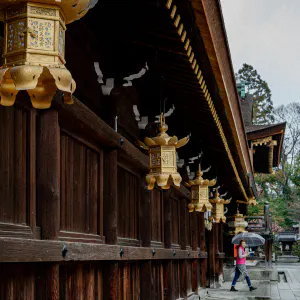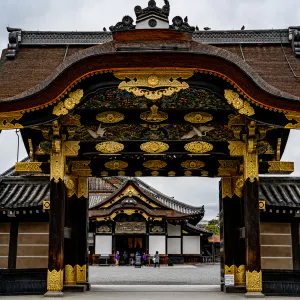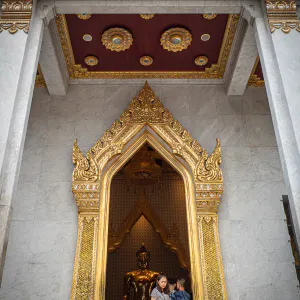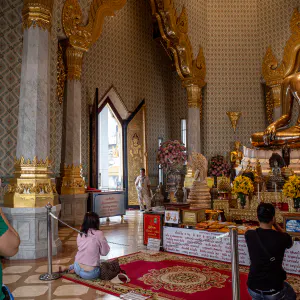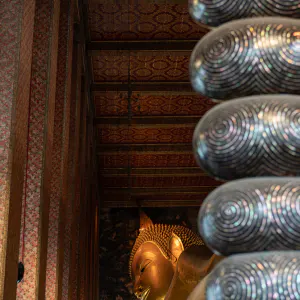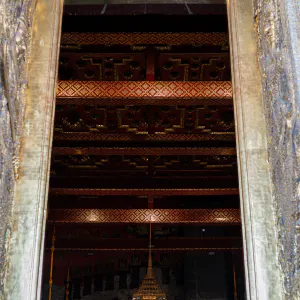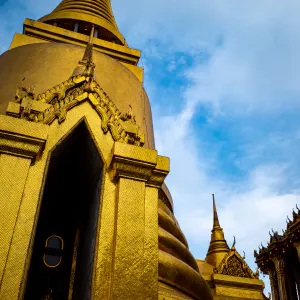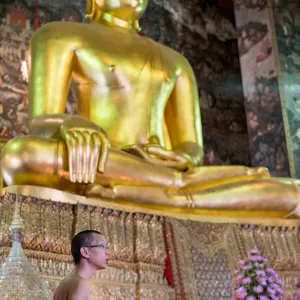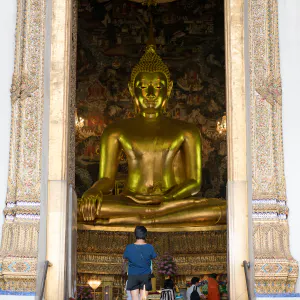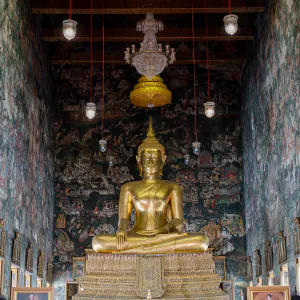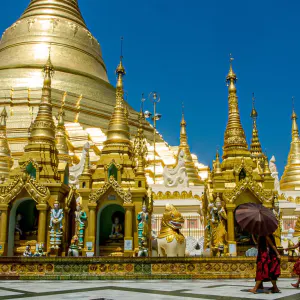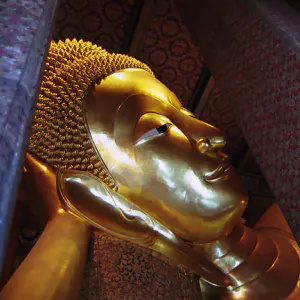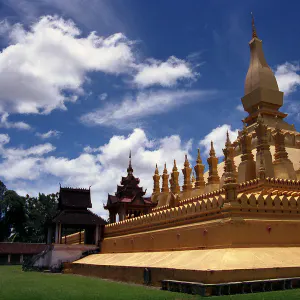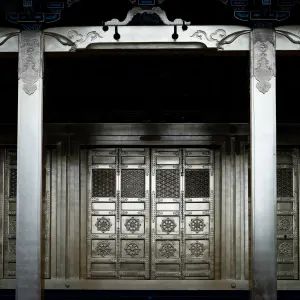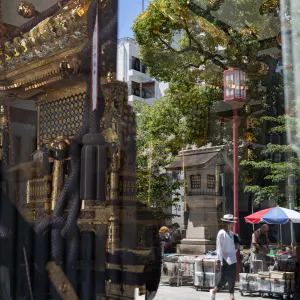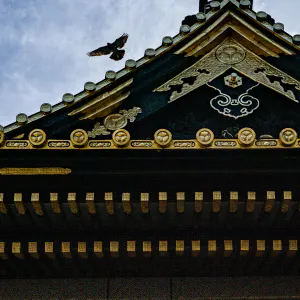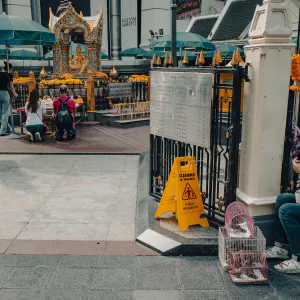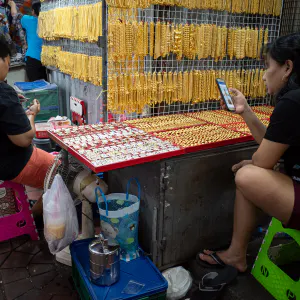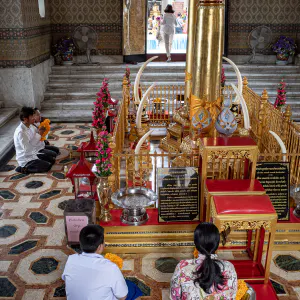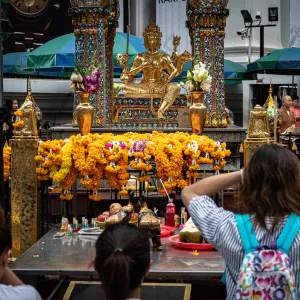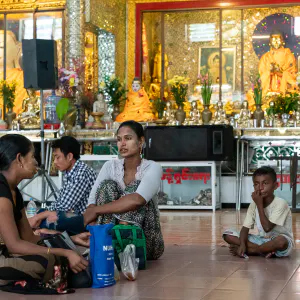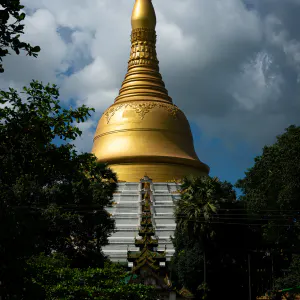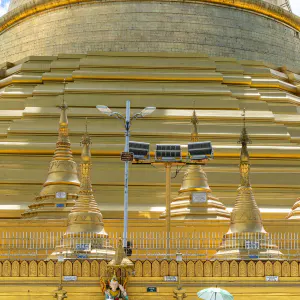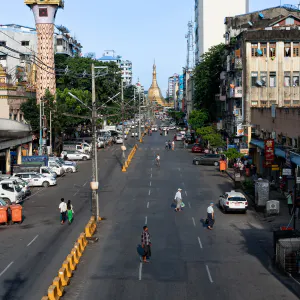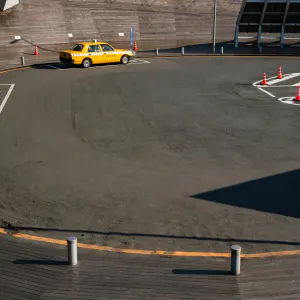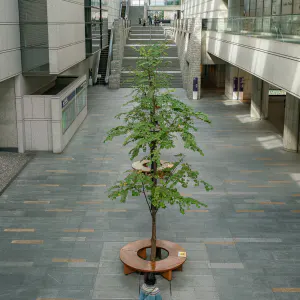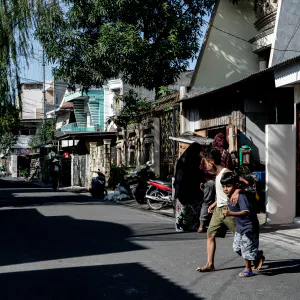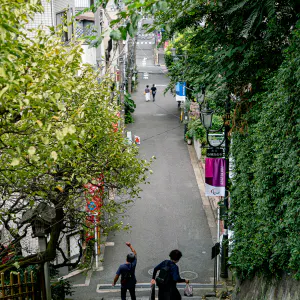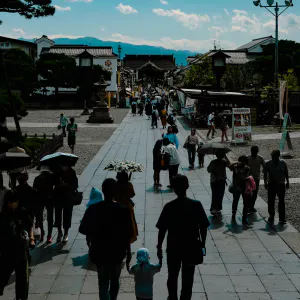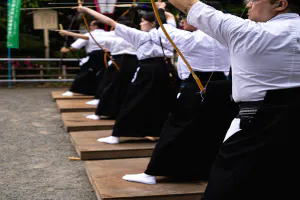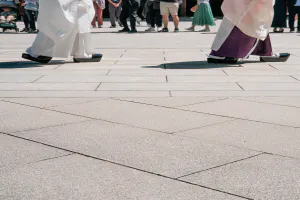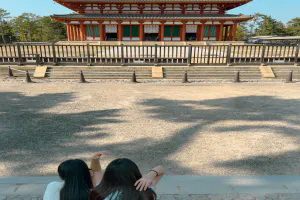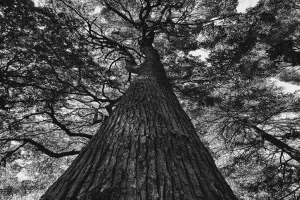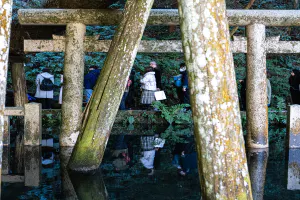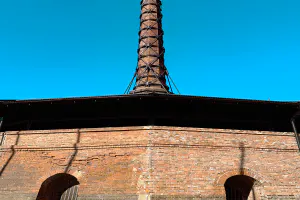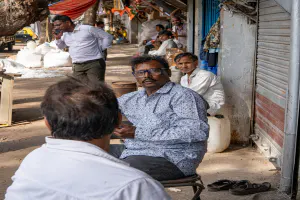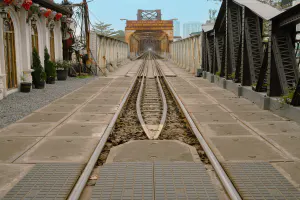Looking around from underneath the hexagonal diamond lantern, it's hard to tell whether I am at Nishi Honganji or Higashi Honganji
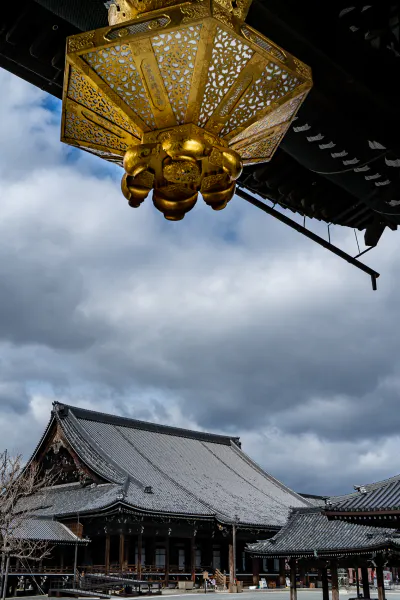
Nishi Hongan-ji and Higashi Hongan-ji — not only do their names sound alike, but they are also located practically side by side. From Kyoto Station, both are less than a ten-minute walk away. When I first visited, I assumed they were simply parts of the same large temple complex. But the truth is not so simple. These temples were originally one, but internal conflicts within the Jōdo Shinshū (True Pure Land Sect) led to a split. In 1602, during the early Edo period, under the political influence of Tokugawa Ieyasu, the temple was divided into two factions: one led by Junnyo, now known as Nishi Hongan-ji, and another led by Kyōnyo, now Higashi Hongan-ji. In other words, the existence of two Hongan-ji temples stems not from a matter of land or layout, but from deep religious and political roots.
As a result of the split, Nishi Hongan-ji became the head temple of the Hongwanji-ha branch, and Higashi Hongan-ji the head of the Ōtani-ha branch. While both belong to the Jōdo Shinshū school, they differ in their interpretations of doctrine, ceremonial practices, and the composition of their followers. For instance, differences between the two can be found in the tone of sermons, the style of ornamentation, and how scriptures are treated—though these are often subtle. It’s not a matter of one being more "authentic" than the other; rather, each has developed its own unique religious path over the centuries.
Architecturally, both temple grounds feature key halls such as the Goeidō (Founder’s Hall) and the Amidado (Hall of Amida), and the decorations are so similar that it's easy to confuse one with the other. Particularly notable are the golden hexagonal lanterns hanging from their grand wooden gates—identical at both sites. But if you pay attention to the size of the buildings, you’ll notice a difference. The Goeidō of Higashi Hongan-ji is among the largest wooden structures in the world. Stepping inside, visitors are often struck by its vastness and quiet majesty. Nishi Hongan-ji, on the other hand, features slightly more compact structures, many of which are designated National Treasures or Important Cultural Properties, offering a glimpse into the elegance of traditional architecture.
From a tourist’s perspective, each temple also offers distinct charms. Nishi Hongan-ji boasts a number of well-preserved historic buildings, including highlights like the Karamon Gate and the Hiunkaku Pavilion. Higashi Hongan-ji, by contrast, is known for its sense of spaciousness and the grand scale of its Goeidō, which attracts many visitors in the spring and autumn seasons. The fact that both temples are open to the public free of charge is another reason why it’s easy to enjoy comparing the atmosphere of these two sects.
As a side note, Jōdo Shinshū is known for being one of the more progressive Buddhist sects founded during the Kamakura period, permitting priests to marry and eat meat. Despite differences between branches, the core belief—that salvation is attained through reciting the nembutsu (the name of Amida Buddha)—remains consistent. Though the expressions of faith may differ, the yearning for the Buddha’s compassion remains steadfast.
| Apr 2021 ARCHITECTURE KYOTO | |
| GOLD KYOTO CITY LANTERN TEMPLE WORLD HERITAGE SITE |
PHOTO DATA
No
11871
Shooting Date
Feb 2020
Posted On
April 9, 2021
Modified On
June 28, 2025
Place
Nishi Honganji, Kyoto
Genre
Architectural Photography
Camera
SONY ALPHA 7R II
Lens
ZEISS BATIS 2/40 CF
